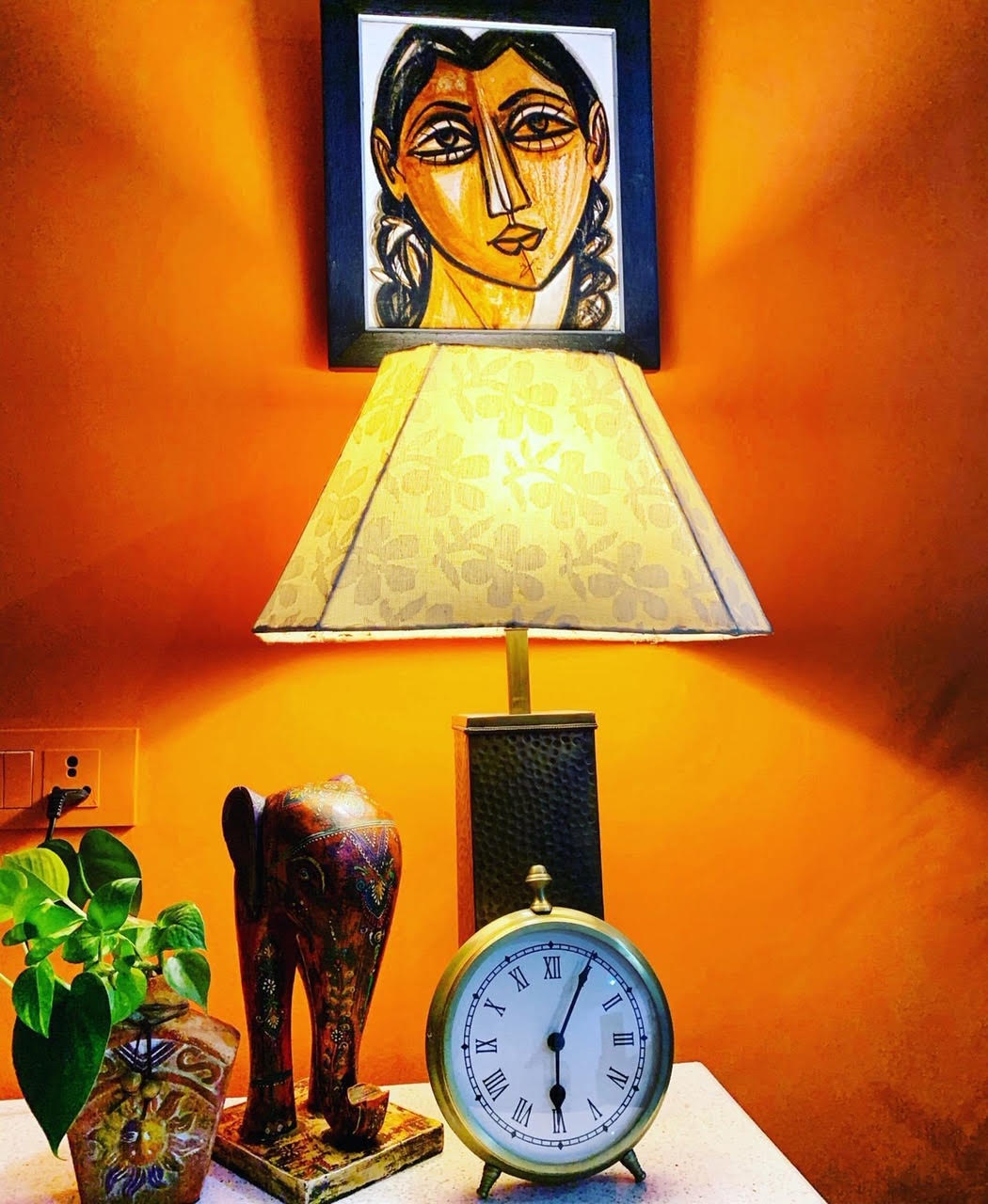Teletherapy in Mental Health is Here to Stay

Teletherapy in Mental Health is Here to Stay
When you walk into Hope Trust for a consultation with a therapist, the ambience is soothing, unlike a typical clinic. There are paintings by well-known artists on the walls, lots of natural light and plenty of indoor greenery.

Inside Rajeshwari’s room, there is a sofa, more paintings, including a priceless miniature painting and lots of small pots with a variety of plants and bonsai. The massive window gives a spectacular view of the city, with the Golconda Fort in the distance. One wall is of saffron, a colour that is associated with spirituality. When a client is sharing, the therapist sometimes pours water from a copper jug and gently pushes a flower-patterned tissue box toward the person. This may prompt a breakthrough, with tears that the client may have been withholding.
This small gesture signifies an assemblage of meaning: concern, care, empathy, comfort. Such an experience is only possible in person, with two people in the same room, sharing the same space.
With the COVID-19 scenario and consequent lockdown and restrictions, such face-to-face intimacy is not possible across all professional disciplines. Psychotherapy sessions have also become virtual – conducted over online platforms like Zoom or Skype. From intimate meetings, they are now remote. But it comes with a price.
“There’s the ritual of coming in every week, sitting in that room on the same chair in the same office,” says Sandeep. “It feels very comforting and safe. I feel the environment part of it is very important for therapy.”
The future is online now
It’s not just mental health. We are not getting the personal interactions we were used to—no parties, family gatherings or meetings. We are now affected by loneliness, brought about by isolation.
Online businesses like Amazon and food delivery apps are reporting an unprecedented surge in revenue as people order online instead of physical shopping or eating out. Schools and college classes, and exams are mostly online now.
However, mental health delivered via online platforms has been around for some time. Telepsychology (or teletherapy or telepsychiatry or tele-mental-health, as it’s been variously called) may have found a place in our lives that’s likely to stick around. There’s been a lot of talk about the potential of telemedicine in healthcare. While it easily replaces many visits to the hospital or clinic for some types of care, many other issues necessarily require hands-on contact with the healthcare professional. It certainly cannot become a universal practice.
Tele-psych, though—with its talk-and-listen simplicity—is a caring discipline that is perfectly fit to be in the online space.
“In February of 2020, before COVID-19 really hit our country, telepsychiatry was beginning to be widely available but only sporadically adopted,” says Dr. Jay Shore, a professor at the University of Colorado Anschutz Medical Campus and the chair of the American Psychiatric Association’s Telepsychiatry Committee. “Now it’s been a tsunami. At the University of Colorado, maybe 10% to 20% of [mental health] visits were over video before. Now, outside of inpatient stuff, we’re at like 100%.”
That has been true pretty much everywhere else, including India. Hope Trust now conducts most of its therapy sessions online. “I rarely see a patient face-to-face now unless it is required. More than 90% of my clients are now consulting over video, and there’s no compromise in efficacy or satisfaction”, says Dr. Vidhyasagar, a therapist at Hope Trust.
Hope Trust’s partners in the UK – Addictions UK – have been successfully conducting therapy sessions via phone and video for nearly twenty years.
Benefits of teletherapy
This change was made necessary by circumstances, not by choice, but most people like what they’re experiencing. To begin with, there’s convenience: a 50-minute session is a 50-minute session, not two or three times that as the patient wastes part of the day for travelling to and from the appointment. This is especially true of a person living far away from the facility who has to drive long distances. You can now access therapy from anywhere, wherever in the world you are located.
In case you are relocated to another city, you can always consult another cardiologist or ophthalmologist and continue treatment for your physical ailments. Your psychologist is another matter. Tele-psych also facilitates more enduring doctor-patient relationships. You don’t have to go through many sessions confiding your most intimate secrets again to establish a meaningful relationship with your new therapist. The advantage of teletherapy is continuity of care.
All of these benefits have convinced many in the community that online sessions are the future of mental health. And the future is already here, now. We are not likely to go back to where we were.
So, what about the copper jug of water and the flower-patterned box of tissues? What about the sense of a safe, comforting space of the therapist’s office that is neither home nor work, but an intimate space that feels like one’s own for those 50 minutes? Some may miss this soothing ritual.
However, the Coronavirus pandemic has dramatically changed the game. Just how much and for how long it’s changed is the real question.
Teletherapy is not new
Teletherapy may appear very contemporary, but it’s not a new idea. As far back as 1959, the University of Nebraska initiated a pilot project using mid-century video technology to allow patients and doctors to meet remotely. But the system was expensive and impractical. It did not go well with the Freudian era of lying on couches and free-associating to a silent therapist whose face you didn’t even see. And then in the late 1990s, with the Internet thoroughly entrenched and two-way video platforms coming online, telehealth started to gain some traction. Even then, though, it was used in a limited way.
This established the technology’s potential—if not its immediate appeal—and practitioners adopted it unevenly.
A personal touch delivered digitally
Then the pandemic forced the mental healthcare professionals to shift online, and even doubters began to appreciate some benefits of remote therapy. Tele-counselling has a levelling effect on both the therapist and the client. They get a background glimpse into each other’s homes – an intimate equality of the behind-the-scenes access. Personal knick-knacks on the nightstand can give some enlightening insight into the other’s personality and lifestyle.
Moreover, a tele-session often generates spontaneity and humour. A surprising number of people, says Riju, will have a session in the bathroom, sitting on a closed toilet—seeking a private spot in their homes. For some, the toilet has become the new couch!
During a session, a client’s cat jumped onto the table, peering curiously into the camera. An embarrassing but amusing moment that made both of them laugh. The patient later said that it was the best and most helpful moment in the session. That made the client feel that was the high moment of the session.
Is teletherapy for all?
The effectiveness, of course, depends on the kind of issues the client is struggling with. Obsessive-compulsive disorder (OCD), for instance, lends itself well to tele-counselling because the therapy is mainly skill-based – learning behavioural tools to break the OCD cycle – which requires less intimacy and more rigorous practice and discipline. Post-traumatic stress disorder (PTSD) patients may similarly benefit from online therapy since their home might feel like a safer space than a doctor’s office.
On the downside, the limited frame of a computer screen may make the therapist miss some cues -the shaking foot, the knotted hands, the subtle shifting in the chair that silently communicates unease with a topic of conversation. Persons with substance abuse issues cannot escape detection via unsteady gait or smell in physical sessions. But they can get away on Zoom.
Medicine – virtual or otherwise – is all about improving community health. Mental health, which lacks the precision of other medical disciplines—the blood tests, scans and MRIs that make diagnosing illnesses and prescribing treatments so straightforward—has always needed more options in its therapeutic toolkit. Tele-psych, even with its drawbacks and sceptics, is easily one of the newest. In time, it may also prove to be one of the best.
The new world is online
In these times of uncertainty, technology-based solutions are offering the way forward. We are today dealing with solutions for a world where the word ‘Positive’ has taken on an altogether new and dreaded meaning. Social distancing, isolation and lockdown have challenged both individuals and corporate houses as well as medical and mental health facilities. Treatment facilities which stay connected with their clients and have the most clear-cut communication processes are the ones which will grow and evolve in the post-COVID-19 era.
Hope Trust has always believed that innovation is one of the keys to improving service delivery. With the changing scenario and advancement in technology, it was quick to adapt and has a robust digital platform with over a dozen psychologists, psychiatrists and counsellors who are available online for helping individuals struggling with a variety of mental health and addiction-related issues. Virtual reality has become the new paradigm in this ever-evolving ecosystem. At the moment, digital engagements are the way forward.
The response from our clients is encouraging and reinforces our commitment to providing convenient and confidential therapy toward a healthier, happier life.